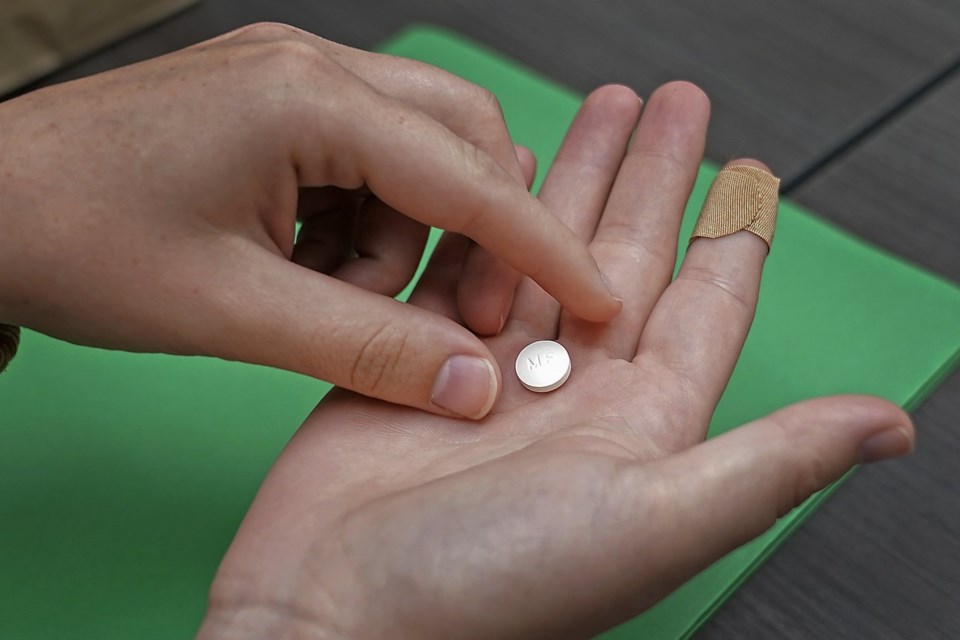Three states are renewing a legal push to restrict access to the abortion medication mifepristone, including reinstating requirements it be dispensed in person instead of by mail.
The request from Kansas, Idaho and Missouri filed Friday would bar the drug’s use after seven weeks of pregnancy instead of 10 and require three in-person doctor office visits instead of none in the latest attempt to make it harder to get a drug that's used in most abortions nationally.
The filing seeking to sue the U.S. Food and Drug Administration was made in a federal court in Texas where the case was returned after the unanimously agreed to keep federal changes that eased access to the medication.
In that ruling, the high court did not tackle the merits of the approval but rather said that anti-abortion doctors and their organizations lacked the legal right to sue. The justices also previously refused the states’ push to intervene in the case.
The states argue they have legal standing because access to the pills “undermine state abortion laws and frustrate state law enforcement,” they wrote in court documents.
They are now making a more modest but still far-reaching request instead: that the courts return the restrictions around the drug to where they were before the FDA relaxed them in 2016 and 2021.
The relaxed rules also allow care providers such as nurse practitioners to prescribe the drugs in addition to doctors.
Medication abortions — usually using mifepristone in combination with a second drug, misoprostol, accounted for about half the abortions provided in the U.S. before the Supreme Court's 2022 ruling that overturned Roe v. Wade. The decision ended the nationwide right to abortion and opened the door for states to impose bans and additional restrictions. Thirteen states now enforce bans on abortion at all stages of pregnancy and four more bar it after about six weeks — before many women know they're pregnant.
The pills are now used in close to two-thirds of the abortions provided across the country and prescribed via telehealth to patients in states with bans by doctors in states with laws that seek to protect them from legal scrutiny for providing such interstate care. Expanded access to the medications is one reason monthly abortion numbers are
Aid Access, which helps women get abortion pills and covers costs for those who can’t afford them, criticized the latest filing on Wednesday.
“The document submitted is full of lies,” said Dr. Rebecca Gomperts, the group’s founder. “There is overwhelming scientific proof that telemedical abortions done at home for pregnancies up to 13 weeks are as safe as in-clinic abortions.”
Over the years, the FDA reaffirmed mifepristone’s safety and repeatedly eased restrictions, culminating in a 2021 decision doing away with any in-person requirements and allowing the pill to be sent through the mail.
Abortion opponents have been arguing that the FDA’s easing of restrictions resulted in many more “emergency complications.” But that argument lumps together women experiencing a range of issues with mifepristone — from the drug not working to people who may simply have questions or concerns but don’t require medical care.
OB-GYNs say a tiny fraction of patients suffer “major” or “serious” adverse events after taking mifepristone.
A legal brief by a group of medical organizations including the American College of Obstetricians and Gynecologists says major adverse events — such as significant infection, excessive bleeding or hospitalization — occur in about one in every 300 patients.
The labeling also mentions those who use the drug went to the emergency room in 2.9% to 4.6% of cases — something the states seized on in their filing. But doctors say ER visits don’t always reflect big problems; some people may go there just to be checked out or to ask questions because they don’t have a primary care doctor or don’t want to talk to their doctor about their abortion. A found that slightly more than half of patients who visited the ER because of abortions received only observational care.
___
Associated Press reporters Kimberlee Kruesi, Matthew Perrone, Laura Ungar and Lindsay Whitehurst contributed to this article.
Geoff Mulvihill, The Associated Press



